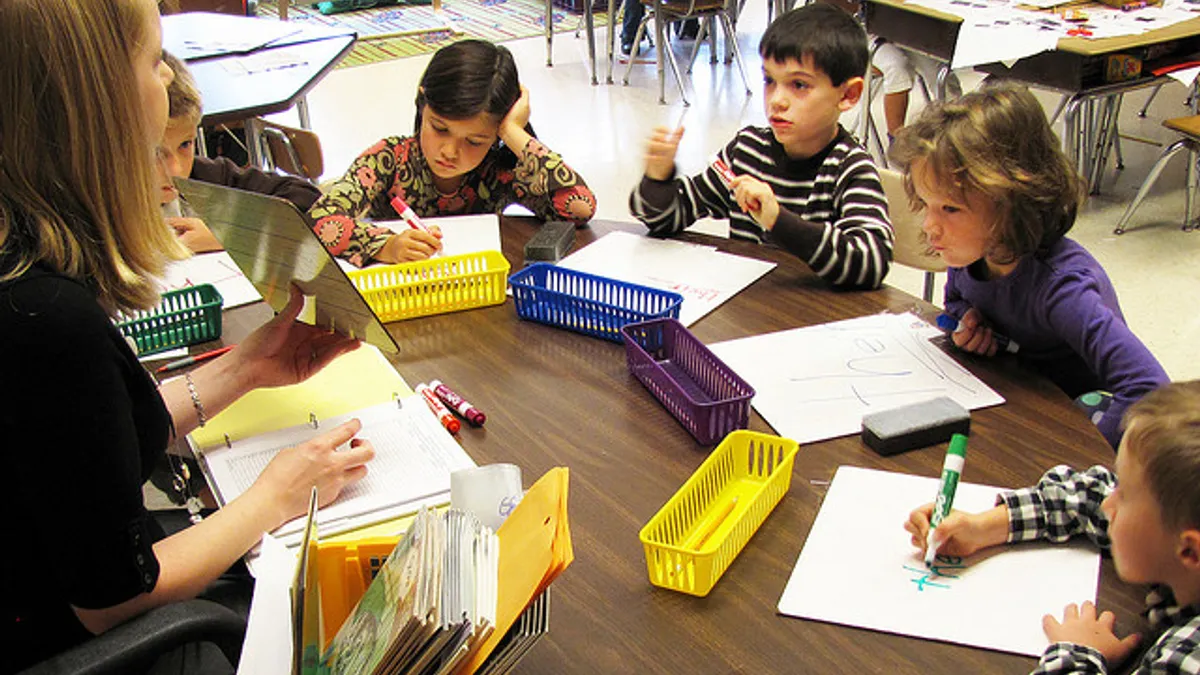Dive Brief:
- According to the U.S. Department of Education, 16% of all students, or more than 7 million, were chronically absent in the 2015-16 school year, EdSurge reports, noting that while the federal government is waiving participation rate as an achievement indicator for one year due to the coronavirus pandemic, districts are still making chronic absenteeism a priority.
- Long Beach Unified School District, for example, opened 26 Family Resource Centers offering health-related services for students' families around areas like parenting, behavior management, crisis intervention, suicide prevention and attendance issue support. Since March closures, efforts have shifted to also focus on meeting needs like food security and internet connectivity that enable students to participate more readily in distance learning.
- Rosa Parks Elementary, in Sacramento, sought the help of nonprofit City Year Sacramento, which is part of AmeriCorps national service network, to help turn its low attendance rates around. Together, they evaluated trends, identified students at risk and provided interventions. Data shows that from Jan. 6 to Feb. 24, 60% of students increased their average daily attendance before COVID-19 closures, and family engagement around well-being, obstacles to learning and technical support has since become a priority.
Dive Insight:
Chronic absenteeism was a concern for district leaders long before the coronavirus pandemic forced districts to close school buildings.
To improve absenteeism rates, and even engagement in school, a report from Attendance Works and American Institutes for Research suggests schools focus on improving conditions of learning, which include: creating an environment of physical and emotional health and safety; having a sense of belonging, connectedness, and support; providing relevant learning that is academically challenging; and improving adult and student social and emotional competencies. This is especially important for traditionally underserved students, such as students of color, students living in poverty and those with disabilities.
Absenteeism rates among special needs students were also high before the pandemic, according to an analysis by the Research Alliance for New York Schools. It found 13% of the 200,000 special needs students in its system missed at least 20% of school days in the 2015-16 school year. The COVID slide is expected to be especially drastic for special education and low-income students, as they tend to rely on schedules and consistency for success.
When schools switched to online platforms due to shutdowns in the spring, attendance plummeted in some districts. A Fishbowl survey of 5,659 educators found 35% of respondents reporting their online class attendance was as low as 0% to 25%, and 55% said their attendance was less than half. Out of states that had at least 100 teacher responses, Michigan had the highest rate of online absences, with 62% saying one-quarter or fewer of their students attended remote classes.
Some districts, including Fulton County Schools in Georgia, didn’t take attendance early in the shutdowns. Other districts switched to a pass/fail or A/B/C grading system without the option to fail, which may have contributed to the plunging attendance rates.














